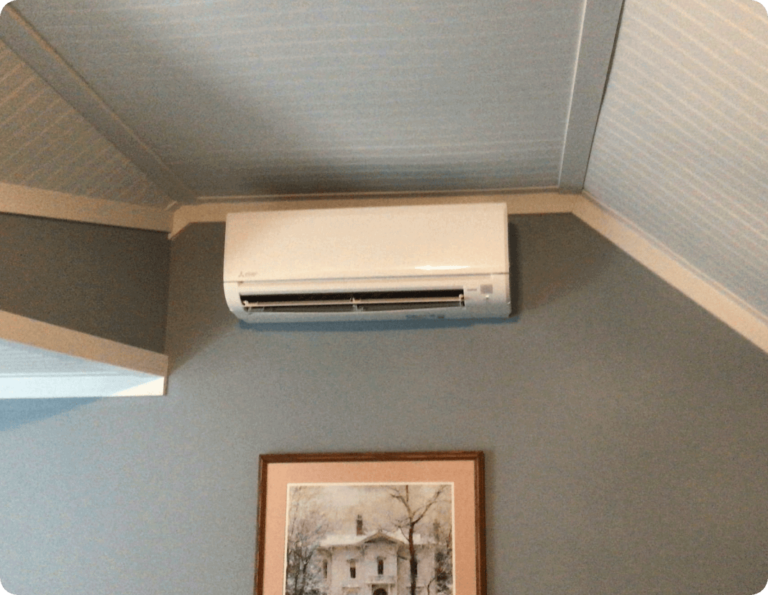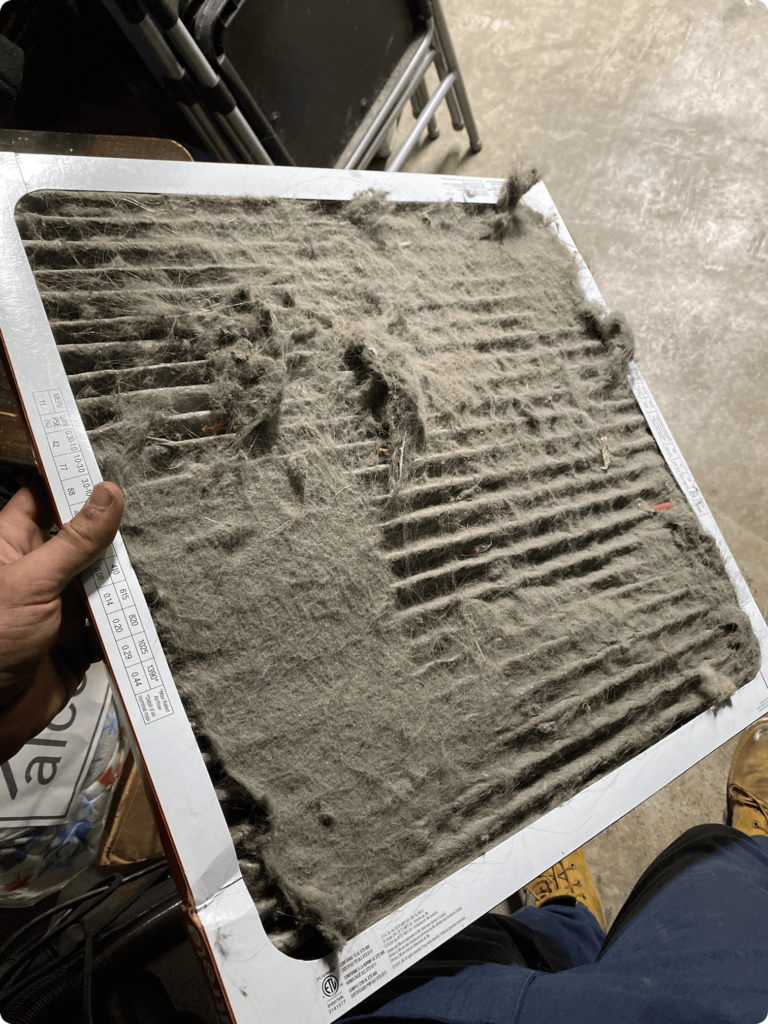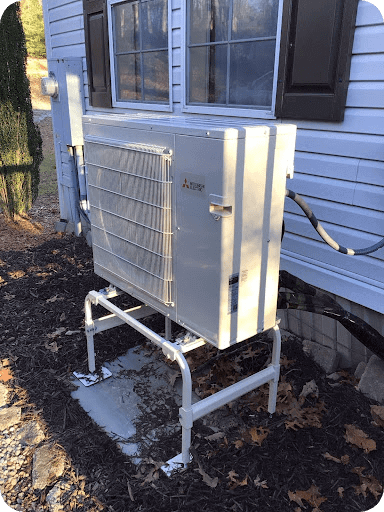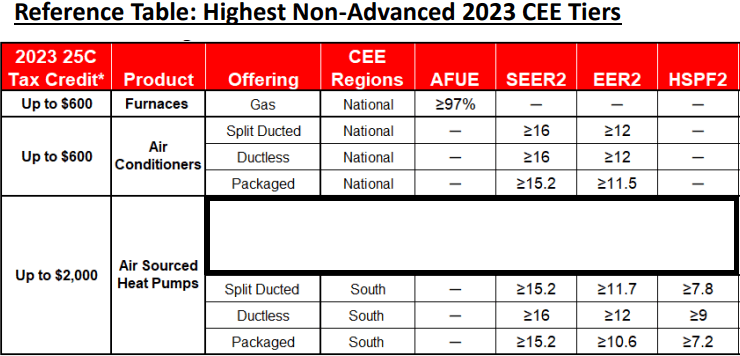
When it comes to cooling your home, two of the most popular options to consider are: central air conditioning (traditional, cooling-only heat pump) and ductless mini split systems (ductless heat pump that heats and cools). Each has its own unique features and benefits, as well as drawbacks. In this article, we will compare mini splits and central air, discussing their workings, pros and cons, costs, and help you determine which option is best suited for your needs.
I have been working with mini splits and HVAC systems for a few years now, and ductless mini splits are some of the best pieces of HVAC technology I’ve ever seen. Before working in the HVAC industry, I got a degree in mechanical engineering and worked as a design engineer for 19 years. I can say from experience, it’s a pleasure to install such a great system in homes and businesses in the Brevard, NC area.
How Central Air Works
Central air conditioning systems are designed to cool an entire house using a centralized unit and a system of ducts. The process begins with the central unit, typically located outside the house. This unit contains a compressor, condenser coil, and fan. It extracts heat from indoor air and releases it outside, resulting in cooler air being circulated throughout the home.
The cooled air is distributed through ductwork, which runs throughout the house and connects to vents in each room. A thermostat allows homeowners to set the desired temperature, and the system adjusts accordingly to maintain it.
Read More: Installing A Mini Split System In Greer
How A Ductless Mini Split Works
Ductless mini split systems, on the other hand, provide cooling on a room-by-room basis without the need for ductwork. They consist of two main components: an outdoor condenser unit and one or more indoor air-handling units. These units are connected by refrigerant lines and electrical wiring.
The outdoor unit houses the compressor and condenser, while the indoor units contain the evaporator coil and a fan. When the system is turned on, the outdoor unit circulates refrigerant to the indoor units, where it absorbs heat from the room’s air. The cooled air is then blown back into the room, providing efficient and targeted cooling.

Mini Split System Vs. Central Air: Pros & Cons
When you are comparing central air vs mini splits, you should look at the pros and cons. Each of them does some things well, but each also has a few drawbacks. This is a major decision for your home, and here are a few of the most basic pros and cons for each HVAC system.
Mini Split Pros
- Zoned Cooling: Mini splits allow for individual temperature control in each room or zone, providing personalized comfort and energy savings.
- No Ductwork Required: The absence of ducts makes installation easier and less invasive, reducing the risk of energy loss associated with duct leaks.
- Energy Efficiency: Mini splits are highly energy-efficient due to their zoned cooling capabilities, allowing you to cool only the rooms you are using, resulting in lower energy consumption.
Mini Split Cons
- Higher Initial Cost: Ductless mini splits can be more expensive upfront, especially when multiple indoor units are required to cool an entire house.
Central Air Pros
- Whole-House Cooling: Central air conditioning systems provide consistent cooling throughout the entire house, maintaining a uniform temperature.
- Lower Initial Cost: A central air system will cost a bit less than a ductless mini split system, even if it’s still a pricey item
Central Air Cons
- Duct-Related Issues: Ducts can accumulate dust, allergens, and contaminants, requiring regular cleaning and maintenance. Leaks in the ductwork can lead to energy loss and decreased efficiency. It’s invasive and costly to install new ducts.
- Limited Zoning: Central air systems typically lack the ability to individually control temperatures in different rooms, resulting in less flexibility and higher energy consumption. It can also lead to disagreements about the temperature with members of the home.
Central Air Vs Mini Split: Cost
Most people simply think about the installation cost, but truthfully there is more to it than that. You should be thinking of the longevity of your system, and how much it’s going to impact your energy bills for the next 10+ years.
Installation
The cost of installation can vary depending on factors such as the size of the house, the number of rooms, and the complexity of the installation process. In general, mini split systems tend to be more expensive to install due to the need for multiple indoor units and the associated electrical and refrigerant lines. Central air systems, although requiring ductwork, may have a lower initial installation cost if the house already has existing ducts.
Cost to Run
The cost to run a mini split vs central air depends on factors such as electricity rates, system efficiency, and usage patterns. Mini split systems tend to be more cost-effective in the long run due to their zoned cooling capabilities, allowing you to cool only occupied areas. Central air systems may consume more energy as they cool the entire house, regardless of room occupancy.
What Is Better: Mini Split Or Central Air? Our Conclusion
Different homes require different styles of comfort, so this question can vary. In most cases, we feel that ductless mini splits tend to be a better option. They can operate up to 30% more energy efficient than a central air system, and provide more customizable cooling options.
They also have to ability to heat your space! If you install a central air conditioning system, you are going to have to install a heating system as well, most likely a furnace that uses the same ducts as the AC.
Central Air Vs. Mini Split FAQs
Here are a few questions we hear a lot when it comes to central air vs ductless mini splits.
Is a mini split more efficient than central air?
Yes, mini splits are heat pumps, and tend to be more energy-efficient than central air conditioning systems. The ability to split the home into zones helps to save energy, and customize comfort.
Can one mini split cool a whole house?
Typically, one mini split unit is not going to be able to cool an entire house. It’s great as a supplement, or to use for an addition or bonus room. To comfort a whole house multiple mini splits are usually needed.
How long do mini splits last?
The lifespan of a mini split system can vary depending on factors such as usage, maintenance, and the quality of the brand. With proper care and regular maintenance, mini splits can last for 15 to 20 years or even longer.
If you are interested in a mini split installation in Greenville, SC give us a call at (828) 415-3335.





